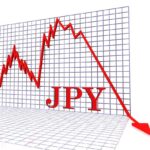Australian dollar gain as Australian retail sales expected to rise.
On Monday, the US dollar (USD) is trading down vs the Australian dollar (AUD). The United States (US) released mixed economic statistics on Friday, which contributed to the erratic session for the AUDUSD pair. Although the US jobs data was strong, there are still worries about the services sector’s declining business activity. Causing investors to view the outlook for the economy cautiously.
Data on Australian retail sales are expected to rise by 1.2% after declining by 0.2% the previous month.
Tuesday’s release of Australia’s November Retail Sales (MoM) data. Which is anticipated to show a 1.2% increase from October’s 0.2% fall, could persuade. Policymakers at the Reserve Bank of Australia (RBA) to keep interest rates high for a prolonged length of time. The Australian Dollar’s fragility may have been highlighted by the recent Judo Bank Purchasing Managers Index (PMI) data. Which showed a decline in business activity in both the manufacturing and services sectors.
Zhongzhi, a wealth management company in China, has declared bankruptcy.
Zhongzhi Enterprise Group, a Chinese wealth manager, filed for bankruptcy liquidation in response to its enormous $64 billion in liabilities. Being a significant participant in China’s $3 trillion shadow banking industry, its financial difficulties may be a sign of the wider property debt crisis spreading into the the financial industry. The tight economic relations between China and Australia mean that this occurrence will probably have a negative effect on the Australian dollar (AUD).
The negative bias in the sideways movement of the US Dollar Index (DXY) may be attributed to the drop in the 2-year US Treasury bond’s short-term yield. Due to conflicting US statistics, the US Dollar lurched on Friday, fluctuating between gains and losses.
US nonfarm payrolls increased to 216K from 173K the prior month.
The US Bureau of Labor Statistics showed signs of improvement in the labor market. Nonfarm Payrolls improved from the 173K recorded in November to 216K in December. This number was higher than the market estimate, which was for a 170K increase. Additionally, Year-over-Year Average Hourly Earnings (YoY) increased to 4.1% from 4.0%. In the meantime, the monthly index did not change. at 0.4% compared to a 0.3% fall that was anticipated.
The Services Purchasing Managers Index (PMI), which was 50.6 in December instead of the anticipated 52.6 and 52.7, indicated a slowdown in the services sector, according to the Institute for Supply Management (ISM). In contrast, the Services Employment Index dropped from 50.7 to 43.3.
In his analysis of the US labor market, Thomas Barkin, the president of the Federal Reserve Bank of Richmond, pointed out that it is presently undergoing a consistent downward trend. According to his perspective, it doesn’t appear like the labor market will pick back up speed right now.
Lorie K. Logan, the president of the Federal Reserve Bank of Dallas, offered commentary on Saturday, stating that considering the current Financial situations are getting better. She underlined how crucial it is to refrain from early relaxation since it can increase demand. Sufficiently restrictive financial conditions are thought to be essential for controlling the possibility of inflation resuming and possibly undoing advancement.
Daily Market Movers: After a quiet start, the Australian dollar US Dollar.
The Australian Judo Bank Services PMI came in at 47.1, which was lower than the market’s predicted reading of 47.6. The Composite PMI dropped from 47.4 to 46.9. The Australian Judo Bank Manufacturing PMI showed a slight decline in manufacturing activity, going from 47.8 to 47.6 in December. The China Caixin Services PMI increased to 52.9 in December, surpassing both the 51.6 forecast and the 51.5 prior.
ADP Employment in the US Change increased the number of positions by 164K, above the market estimate of 115K and the prior figure of 101K.
US Initial Jobless Claims, which fell to 202K from 220K the previous week and above forecasts of 216K, showed encouraging indicators for the job market for the week ending on December 29.
In December, the US S&P Global Composite PMI showed a little decline in business activity, with a score of 50.9 as opposed to the market’s expected steady 51.0.









